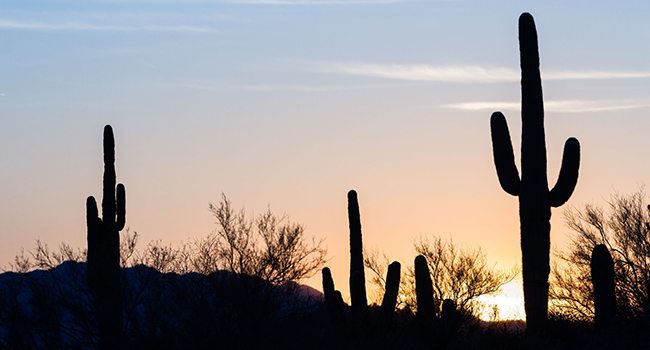Warm days, refreshing nights, and weightlessly dry air: for most of the year, these pleasant conditions characterize the Arizona climate. As a result, residents of the sun-soaked state tend to channel a significant portion of their home improvement expenditures toward the development of outdoor living spaces that are comfortable and functional.
Accounting for the unique ecosystem of the Sonoran Desert, landscape architects and design experts in the Phoenix area strive to maximize homeowners’ use of outdoor living spaces through the following trends observed by by Creative Environments.
Sustainability
According to the 2016 Residential Landscape Architecture Trends Survey conducted by the American Society of Landscape Architects (ASLA), sustainability is one of the leading design trends of 2016. Homeowners across the country are seeking “green” upgrades that yield savings on utility costs while minimizing impact on the environment.
Sustainability is particularly relevant for the water-starved western states. In Arizona, which has been plagued by a drought for over twenty years, residents are increasingly embracing native and drought-tolerant plants. Landscapes that are designed with the goal of conserving water are known as xeriscapes. For Arizonans, xeriscaping often involves removing grass and replacing it with stony areas peppered with cacti and other native or desert-adapted plants. While some homeowners fear that a xeriscaped yard will appear bland, choosing the right plants will paint a lush and vibrant palate. Desert wildflowers, bougainvillea, and palo verde trees are popular options that add splashes of color while requiring little maintenance. In addition to selecting drought-friendly plants, homeowners may conserve resources by implementing landscape designs that group plants based on the amount of water they need. This allows thirsty plants to thrive without saturating those that require less water.
Even the most desert-friendly landscapes require some hydration. Rainwater harvesting — the most desirable landscape feature of 2016, according to the ASLA study — offers an environmentally conscious way to meet this need. Arizona’s arid climate is punctuated by heavy rains, particularly during the summer monsoon season. In the absence of a harvesting system, a great deal of that valuable rainwater is lost. Instead, homeowners can use rain barrels to capture water flowing off the roof and recycle it for irrigation. Landscapes may also be designed to include depressions, berms, or basins that collect rainwater and allow it to more effectively soak into the earth, providing sustenance for nearby plants. In addition to optimizing rainwater runoff, these contours help prevent water from eroding the home’s foundation and other architectural elements on the property.
In keeping with the sustainability theme, organic, locally grown foods have surged in popularity in recent years. For homeowners, edible gardens are a fulfilling way to source fresh, natural products. The Arizona climate is conducive to growing a variety of herbs, vegetables, and citrus trees, although gardeners may want to consult a landscape design expert to identify which plants would flourish in their particular area.
Indoor Comforts
Homeowners have long sought to enliven the interiors of their homes by “bringing the outdoors in.” In recent years, however, the reverse trend has swept the country: homeowners are extending the comforts of the indoors to their backyards. Complete outdoor living spaces, which often include full kitchens that rival their indoor counterparts, are especially popular in Arizona, where agreeable weather for most of the year invites maximum use of the backyard. In addition to well-equipped kitchens, outdoor living must-haves include seating areas and fire pits or fireplaces around which to gather. For most homeowners, the goal is to create a comfortable and convenient space for enjoying the company of friends and family, so features that draw people together are key.
As the comforts of the home extend outdoors, so does technology. From televisions and WiFi to advanced systems that control irrigation, technology is transforming backyard living spaces. Another popular feature is energy-efficient LED lighting, which fills the yard with an enchanting glow. LED lighting is available in multiple colors and is commonly used to illuminate sidewalks, seating areas and even swimming pools.
Modern Design
The desert is admired for its stark beauty, simplicity, and clean lines — the same elements that add to the appeal of modern architecture and design. Therefore, a modern aesthetic is a natural match for desert properties. Common features of a modern landscape design include a minimalist approach to planting, as well as geometric pools and patios that are defined by straight lines and right angles. The austerity of modern design allows nature to take center stage, accentuating rather than distracting from the beauty of the surroundings.




